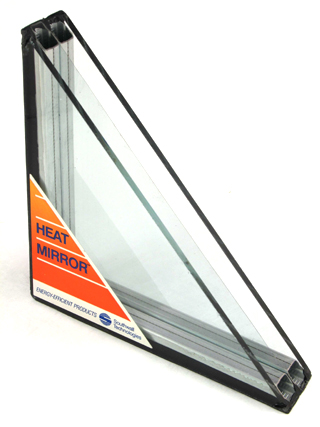
Surveys
Awards
DJC.COM
March 27, 2008
Are your windows really Energy Stars?
Southwall Technologies

Lang
|
Proposed revisions to the Department of Energy’s Energy Star glass performance standards scheduled to debut as early as 2009 should make clear that generic low-e glass no longer represents a level of energy efficiency required to “transform the market,” a key charter of the agency’s program.
Because generic low-e glass provides insulating performance of about R-4 in a world in which R-19 insulated walls are the norm, there’s a dramatic performance gap between what low-e glass provides and what green building practices promise in saving energy and reducing carbon emissions.
Despite heavily insulated walls and ceilings and the popularity of low-e glass, 25 percent to 35 percent of the energy used in homes and buildings is wasted due to inefficient glass. So, it should come as no surprise that glass is responsible for more than 10 percent of the total carbon emissions in the U.S. annually and is a major contributor to global warming.

Photo courtesy of Southwall Technologies Insulation values up to R-20 have been achieved by suspending solar-reflective film inside a low-e glass unit. |
Low-e at the limits
The truth is low-e glass thermal performance has reached practical limits. A low-e coating reflects heat, reducing heat transfer between panes of glass, and thereby improving insulation performance. The “e” in low-e, which stands for “emissivity,” is the ability of a surface to radiate energy. Low-e coatings are rated for the amount of heat they radiate — the lower the number, the less heat is radiated and the better the insulation performance of the glass.
Coated glass is commonly available with emissivity ratings below .03.
Lowering emissivity from .03 to zero will have a negligible improvement on window performance. Clearly, further improvements in glass thermal performance will not come from improvements in low-e coatings. Low-e coated glass has become a minimum performance baseline and no longer represents a path to improved energy performance.
The incremental performance benefit of using low-e glass is ZERO, because it is already assumed as a required product.
Generic low-e insulating glass, consisting of two pieces of coated glass separated by a sealed, gas-filled air space (or cavity), achieves a maximum thermal insulation value of R-4. With further advances in glass coating technology expected to provide minimal performance improvement, the focus has now shifted from coatings to cavities.
More cavities
Just as the introduction of single-cavity insulated glass provided a breakthrough in performance beyond monolithic glass, the introduction of multi-cavity constructions, consisting of two or even three insulating cavities, is providing the next performance breakthrough for insulating glass.
Two alternatives to generic low-e insulating glass are available that can meet the new Energy Star glass performance standards. One is triple-pane glass, consisting of three panes of glass and two low-e coatings.
The good news is by using a third pane of glass to create a second insulating cavity, triple-pane low-e glass doubles the performance of generic low-e insulating glass, from R-4 to R-9. The bad news is triple-pane glass is 50 percent heavier than standard insulating glass, requiring stronger and more costly window framing. The additional coated glass can also reduce visible light transmission by 20 percent or more, reducing the comfort and productivity benefits of natural day lighting.
A superior alternative consists of suspending a low-emissivity and solar-reflective film inside of an insulating glass unit. Without the weight of a third pane of glass, film can create two, three or even four cavities that maximize light transmission and insulate from R-6 to an amazing R-20 to meet the unique requirements of both commercial and residential new construction and renovation projects.
Such internally mounted film does not replace low-e glass. It leverages the benefits of film-based and glass-based technologies to create a lightweight insulating glass that offers a new level of performance. Using film maximizes insulation performance, blocks UV radiation, reduces noise and increases occupant comfort.
Clearly, film-based, multi-cavity insulating glass is today’s state-of-the-art window glass. It has been saving energy in thousands of homes and in such landmark buildings as the Museum of Flight in Seattle, the Hoover Dam Visitor Center and the Boulder, Colo., Municipal Library.
Bruce Lang is vice president of marketing and business development at Southwall Technologies in Palo Alto, Calif. Southwall makes Heat Mirror, a suspended-film insulating glass.
Other Stories:
- Construction training is good for your bottom line
- How to take over a construction project
- Keep buildings in shape with facility condition indexing
- Top 10 tax tips for contractors and developers
- Is your insurance giving you a bad wrap?
- It pays to have a stormwater permit strategy
- UW builds its construction management program
- Watch out for changing immigration laws
- The shocking state of our national infrastructure
- Partner up for successful projects
Copyright ©2009 Seattle Daily Journal and DJC.COM.
Comments? Questions? Contact us.